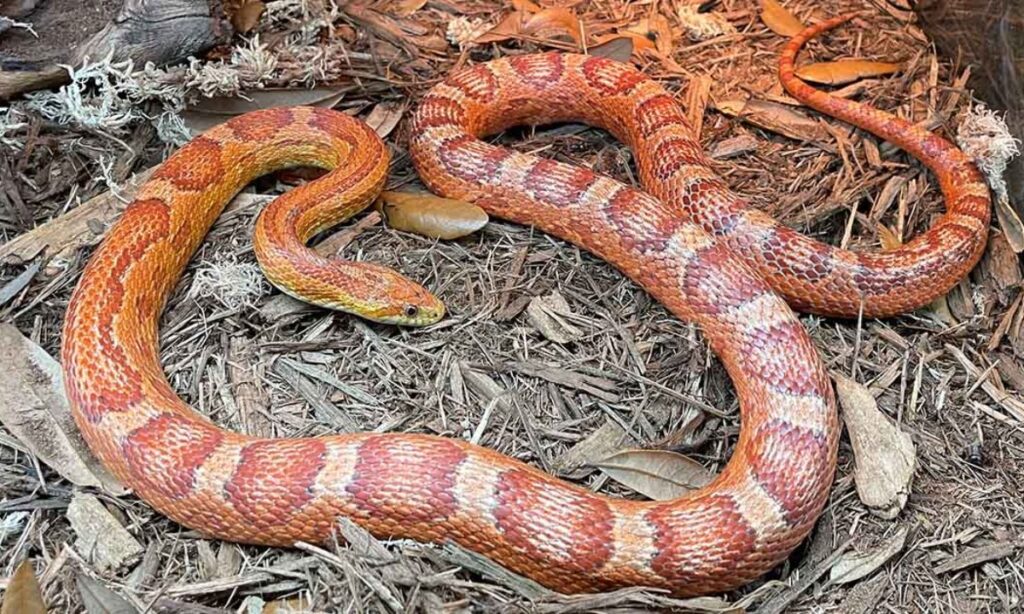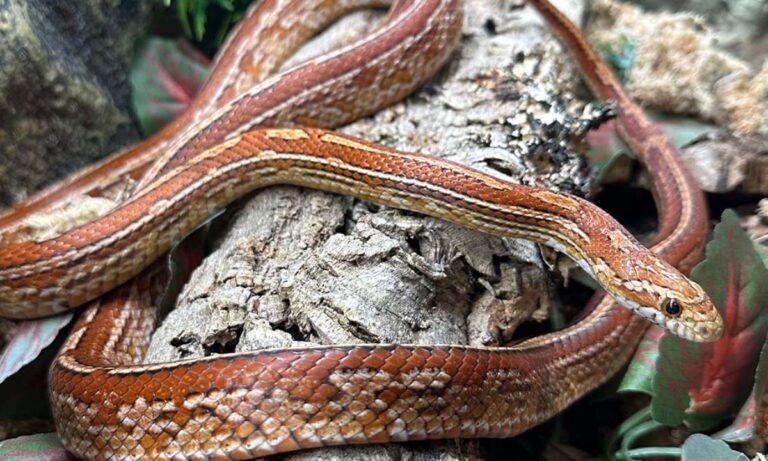A pet snake typically costs between $20 and $300, depending on the species. Common snakes like corn snakes or ball pythons are on the lower end, while rarer species or morphs can be more expensive.
Other factors, like the age and breeder, also influence the price. Exotic species such as boa constrictors or king cobras can cost upwards of $100 to $1000 or more. Always consider the total cost of ownership, including enclosure and care.
How Much Do Pet Snakes Cost to Buy, Own, and Care For?
When considering getting a pet snake, the initial cost can vary depending on the type of snake you choose, the breeder, and its age. Generally, snakes range from $20 to $300 for common species
like corn snakes or ball pythons. More exotic snakes like Boa Constrictors or King Cobras can cost anywhere from $100 to $1000 or more. The most common pet snakes—corn snakes, ball pythons, and king snakes—are usually the least expensive,
| Snake Type | Price Range | Common Species |
| Corn Snakes | $20 – $100 | Corn Snake, Snow Corn Snake |
| Ball Pythons | $50 – $300 | Normal Ball Python, Pastel Ball Python |
| Boa Constrictors | $100 – $600 | Red-tail Boa, Colombian Boa |
| King Cobras | $300 – $1000+ | Monocled Cobra, Indo-Chinese Cobra |
Costs Associated With Pet Snakes
Owning a pet snake is more than just the initial purchase price. There are several ongoing costs for proper care and maintenance.
These costs vary depending on your snake’s species, age, and the environment you provide. Here’s a breakdown of the significant expenses associated with keeping a pet snake:
Enclosure and Setup
The first major purchase after getting your snake is its enclosure. A glass terrarium or plastic enclosure is required to provide a safe, secure, and comfortable living space. The size and material of the tank depend on your snake’s species and size.
Additionally, you’ll need substrate (bedding material), which ranges from $10 to $30, depending on the type. Common substrates include aspen shavings, coconut husk, and reptile carpet.
Read This Blog; Can You Have a Pet Frog in Australia?
Heating and Lighting
Snakes are cold-blooded and require a heat source to maintain their body temperature. Heat lamps, heat mats, or ceramic heat emitters are typically used, with costs ranging from $20 to $50.
| Item | Cost Range |
| Enclosure (40-gallon) | $50 – $150 |
| Substrate | $10 – $30 |
| Hideaways & Accessories | $20 – $50 |
| Heat Source | $20 – $50 |
| Thermostat | $20 – $30 |
| Lighting (UVB) | $10 – $40 |
Feeding Your Snake
Feeding your snake is one of the ongoing expenses. Snakes generally feed on frozen mice, rats, chicks, or hamsters, depending on their species. The cost of food varies, but frozen mice can cost anywhere from $1 to $5 each, while larger prey like rats might cost $3 to $8.
A typical feeding schedule for a snake is every 7 to 14 days, depending on their size and age. If you have multiple snakes, you’ll need to budget for food accordingly.
Healthcare Costs

Like any pet, snakes require regular healthcare. While they are generally hardy animals, there are occasional vet visits for illnesses or injuries. Veterinary costs can range from $30 to $100 for a regular check-up or emergency visit.
If your snake develops a disease like respiratory infections or needs a fecal exam for parasites, the cost may rise to $100 to $200. Some reptiles may also need regular shedding assistance or nail trimming, which can add a bit more to your overall pet costs.
Feeding Schedule
A proper feeding schedule is essential for your snake’s health. Young snakes might eat every 5 to 7 days, while adults usually feed every 10 to 14 days. The feeding frequency depends on the size and age of the snake. Some snakes may even fast for extended periods, especially if they are in shed or brumating.
Make sure to feed your snake appropriately sized prey. Overfeeding or underfeeding can lead to health problems such as obesity or malnutrition.
Heating Source
Since snakes are cold-blooded animals, they need an external heat source to regulate their body temperature. Without proper heating, a snake can become lethargic, stressed, or even sick. There are several types of heating sources:
- Heat lamps: Ideal for providing concentrated heat but can dry out the enclosure.
- Heat mats: Used under the enclosure for consistent warmth.
- Ceramic heat emitters: Provide heat without light and are ideal for nocturnal species.
- Investing in a quality thermostat is also crucial to maintain the temperature at safe levels and prevent overheating or underheating.
Read This Blog; Difference Between a PET and CT Scan
Thermometer
A thermometer is a must-have to monitor the temperature within the enclosure. A good thermometer will cost between $10 and $20.
A digital thermometer is recommended, and it’s best to have one at each end of the tank to monitor both the warm side and cool side.
Substrate
The substrate provides the base of the snake’s enclosure and helps maintain humidity levels. The material used for the substrate can vary, with common types including aspen shavings, coconut husk, and newspaper. Each type has its benefits:
- Aspen shavings: Good for dry environments, affordable, and easy to clean.
- Coconut husk: Best for maintaining humidity, but it needs regular replacement.
- Newspaper: Cheap but doesn’t provide much for aesthetics or humidity control.
Enclosure Lighting

While not all snakes need special lighting, certain species, especially those from tropical or desert environments, might benefit from UVB lighting.
This lighting helps in calcium absorption and provides a day-night cycle. Lighting can cost around $10 to $40, depending on the type and setup.
Hideaways
Every snake needs a place to hide. Hiding spots help reduce stress by providing a sense of security.
Most snakes enjoy a dark, sheltered spot to rest, especially when they’re in shed or feeling threatened. Hideaways are typically made of wood, plastic, or ceramic, and they cost between $10 and $30.
Frequently Asked Questions
How much do pet snakes cost?
Pet snakes generally cost between $20 to $300, depending on the species and age. Rarer types like king cobras or morphs of common species can cost more.
What type of snake is the cheapest?
The corn snake is one of the cheapest pet snakes, typically priced between $20 and $100.
Do snakes require a lot of care?
Snakes are low-maintenance pets compared to others, but they do require specific care such as proper heating, feeding, and enclosure cleaning.
How long do snakes live?
Most snakes live between 10 and 30 years, depending on the species and how well they are cared for.
Can I keep more than one snake?
Yes, you can keep multiple snakes, but make sure to have separate enclosures for each one to avoid territorial disputes or stress.
Conclusion
In conclusion, owning a pet snake involves several initial and ongoing expenses. While the cost of buying a snake can vary, you should also budget for the enclosure setup, heating, lighting, and feeding costs.
Snakes are relatively low-maintenance but still require proper care, including regular health checks and a safe, comfortable environment. If you’re considering a pet snake, make sure to choose the species that fits your lifestyle and budget.
